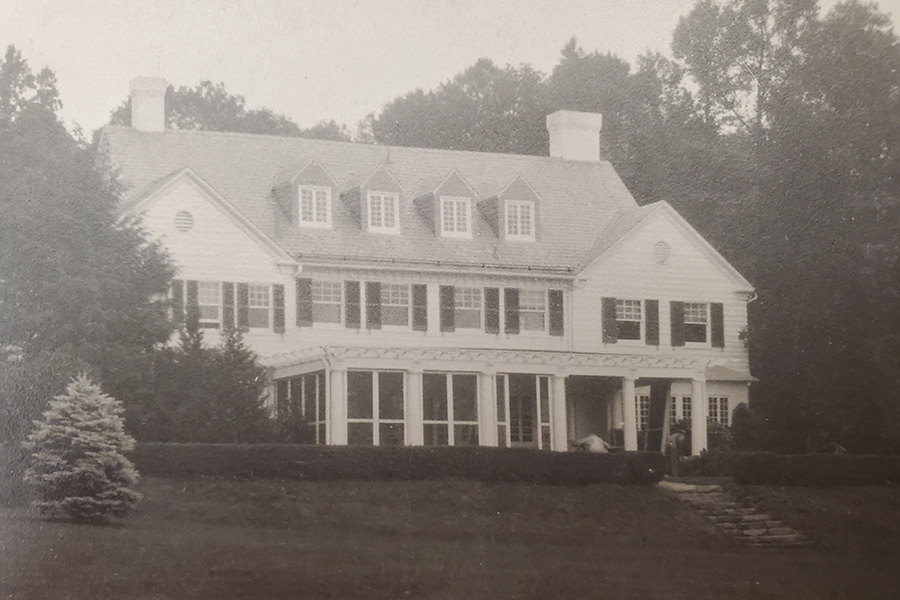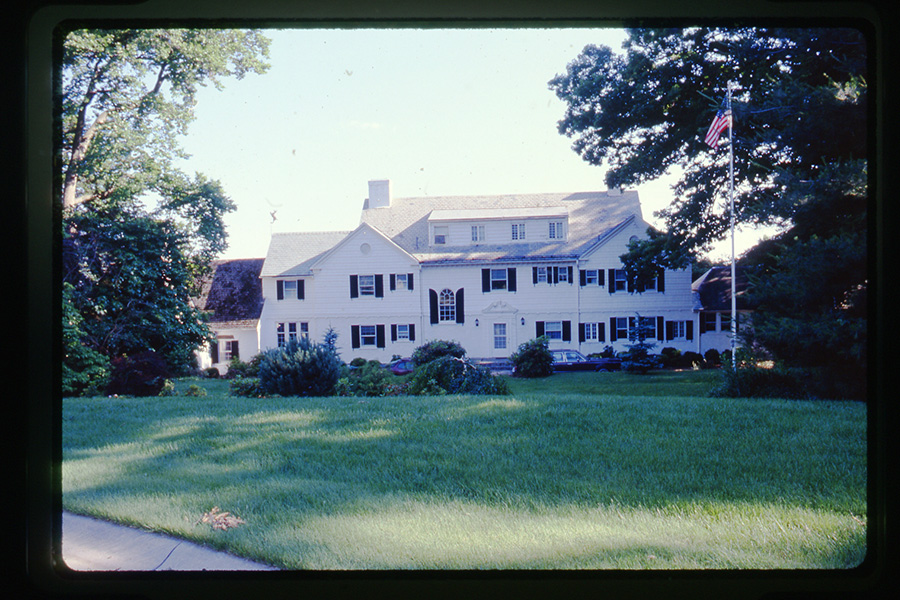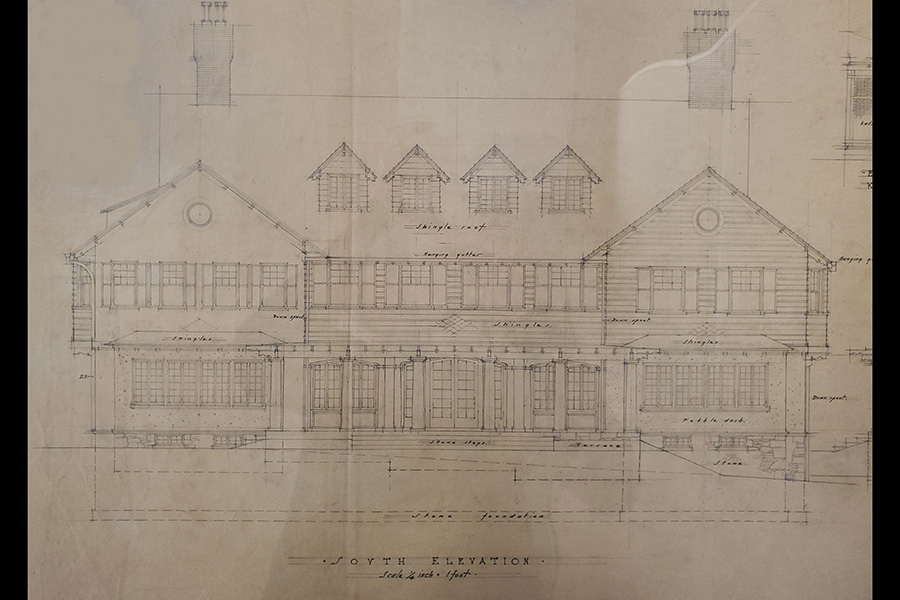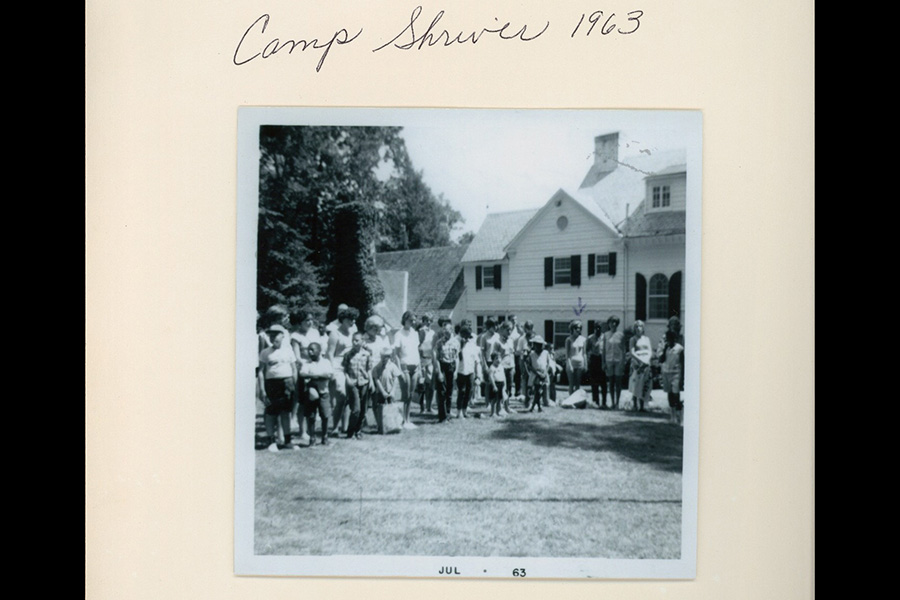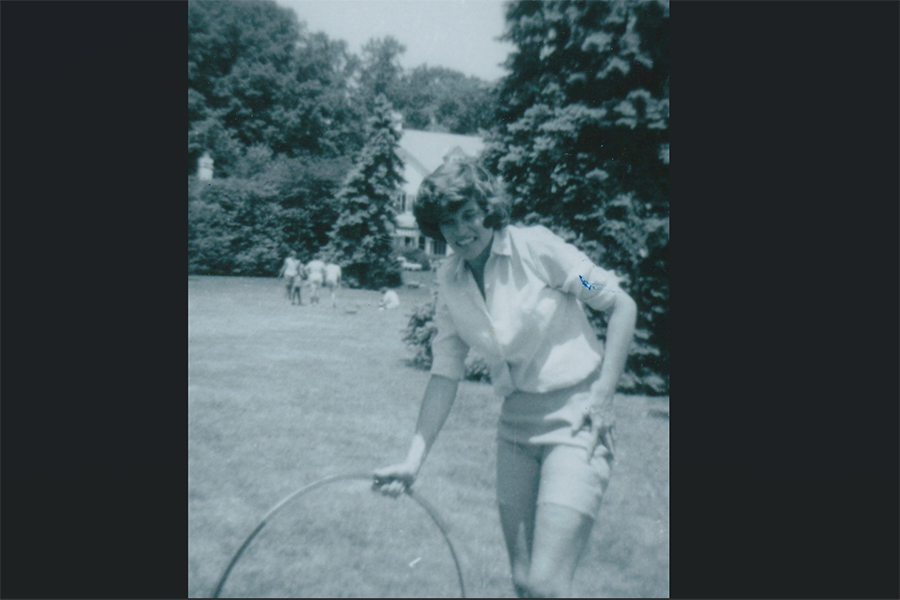Timberlawn, the former residence of Eunice Kennedy and Sargent Shriver, is located at 5700 Sugarbush Lane, Rockville. At the owners’ request, the property is under consideration for designation in the Master Plan for Historic Preservation.
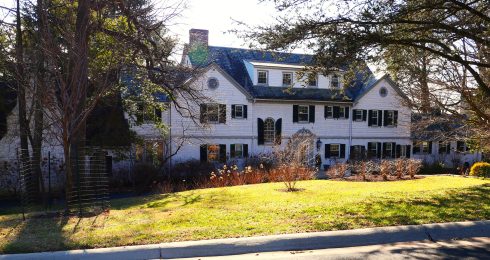
Adopted by the County Council in 1979, the Master Plan for Historic Preservation is the County’s preservation planning document. It includes the list of all officially designated historic sites and districts. Designation of a single property or entire district as a Master Plan historic site or historic district signifies that the particular site or district has been researched carefully by preservation specialists and, through review by the Montgomery County Historic Preservation Commission (HPC) and the Planning Board and by vote of the Montgomery County Council, determined to be of special historic significance and, therefore, to be protected under the Montgomery County Code, Chapter 24A, Historic Resources Preservation.
Designation in the Master Plan for Historic Preservation: 1) recognizes significant architectural and cultural sites; 2) protects buildings and neighborhoods from demolition; 3) manages exterior alterations to resources; 4) provides owners with information on care, restoration, and preservation; and 5) qualifies owners for special tax benefit programs.
Historic significance
Timberlawn remains as the only extant part of the former 280-acre estate where Eunice Kennedy Shriver founded Camp Shriver in 1962. This unique summer camp, designed for children with intellectual disabilities, inspired and led to the creation of the Special Olympics. When her brother, President John F. Kennedy, appointed Sargent Shriver, Eunice Shriver’s husband, as the inaugural director of the Peace Corps in 1961, the couple relocated their family to the Timberlawn estate. The house, open fields, riding trails, and farm served as their family home and an extension of their offices. Eunice Shriver, a lifelong advocate for disability rights, revolutionized physical recreation for individuals with intellectual disabilities while living at Timberlawn. She personally elevated national awareness and initiated candid discussions regarding individuals with intellectual disabilities.
Camp Shriver (1962-1967), an annual summer day camp for children with intellectual disabilities organized by Eunice Shriver and held at Timberlawn, provided a transformative experience for its participants, staff, and counselors from Montgomery County and the surrounding region. Moreover, Shriver seized the opportunity to unite educators, policymakers, medical professionals, and researchers to design a varied program that demonstrated the importance of physical education for individuals with intellectual disabilities. Shriver collaborated with influential leaders of the field including Dr. Frank Hayden who conducted a comprehensive research project at Timberlawn titled “Physical Fitness at Camp Shriver.” This research empirically proved the effectiveness of the program and its mission. Nationally, the number of “Camp Shriver” camps quickly increased, and Eunice Shriver invited elected officials and other people of influence to Timberlawn to witness the success of the program.
Inspired by the success of Camp Shriver at Timberlawn, Eunice Shriver envisioned a national event that showcased the athletic talents of individuals with intellectual disabilities. The Chicago Park District, who had received a Kennedy Foundation grant for year-long athletic programs for children with intellectual disabilities in 1965, returned to the foundation for funding for a track event for at least 500 regional participants in 1968. Eunice Shriver met with the Chicago Park District and the Kennedy Foundation donated $25,000, but she quickly expanded the scope to a national, Olympic-styled event at Soldier Field. At the games, Shriver announced a Special Olympics training program and the continuation of the Special Olympics in the future. Camp Shriver had shifted from her backyard in Montgomery County to the national stage.
Process
Designation of resources to the Master Plan for Historic Preservation is a multi-step process that requires the review of the Historic Preservation Commission (HPC), the Planning Board, and the County Council. Members of the public can participate and comment at each step of the process.
Historic Preservation Commission
At a worksession and public hearing held in October 2024, the Historic Preservation Commission found that Timberlawn satisfied the designation criteria for listing in the Master Plan for Historic Preservation and voted unanimously to recommend that the Planning Board and County Council designate the resource as a Master Plan Historic Site.
Timberlawn Staff Memorandum for October 23, 2024 HPC Meeting
Public Hearing Draft
The public hearing draft was heard by the Planning Board on May 22, 2025. The Planning Board voted unanimously to list Timberlawn to the Locational Atlas and Index of Historic Sites and recommend that the County Council designate the property to the Master Plan for Historic Preservation.
Timberlawn Master Plan Amendment Planning Board Draft
The nomination will be submitted to the County Council in 2025. Information about those meetings will be posted once those dates have been established.
